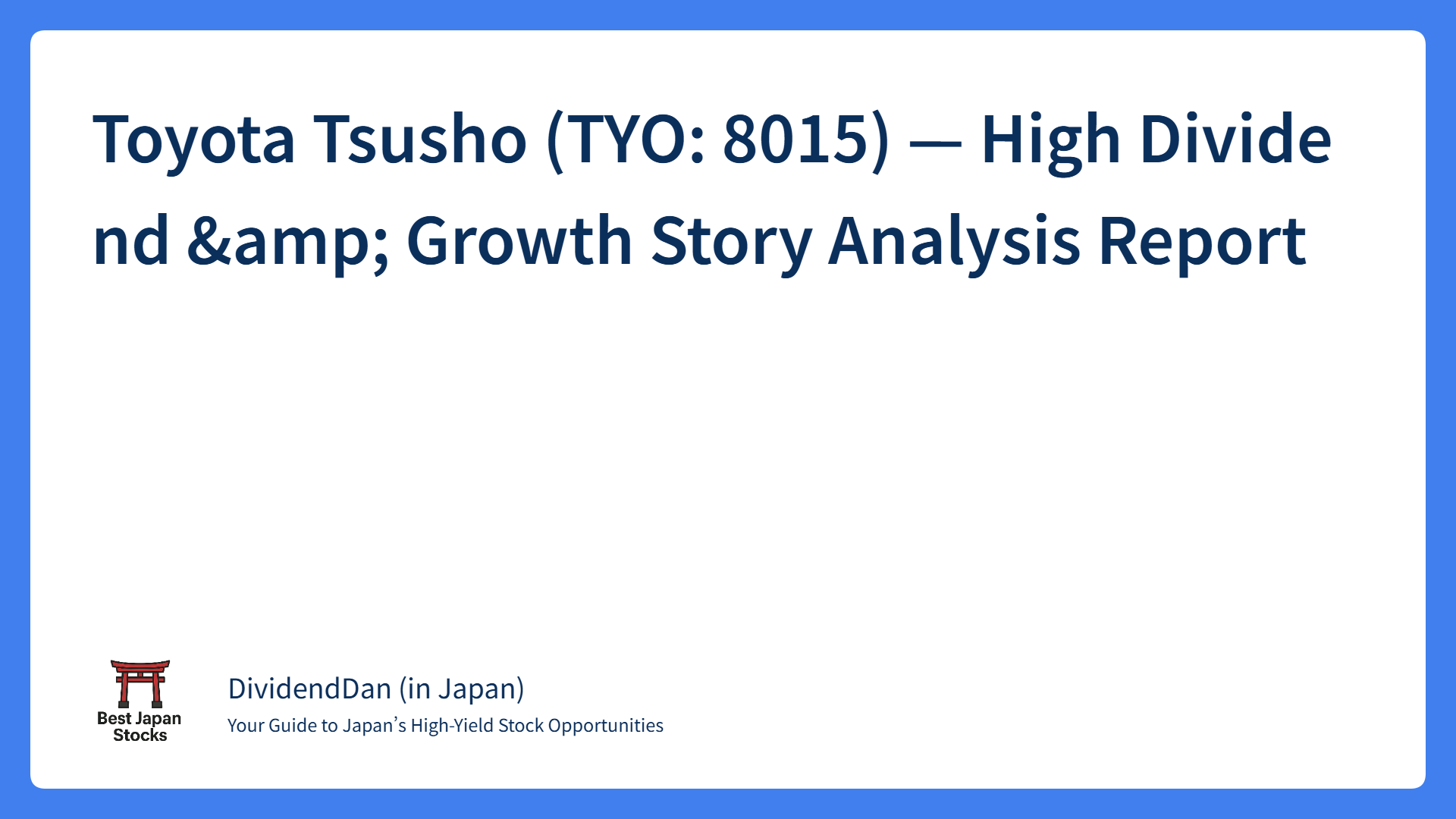Guide to Japan’s Small‑Cap High‑Dividend Stocks (2025 Edition)

Final Public Version (English)
Information current as of June 2025. Market conditions and company performance change over time—always check the latest filings before investing.
Chapter 1 │ Why Focus on Small‑Cap High‑Dividend Stocks Now?
As of 2025, Japan’s large‑cap universe is trading near record highs, with PBRs above 1.2× and forward dividend yields in the low‑3 % range. By contrast, more than 100 companies listed on the TSE Standard section still trade below book value and yield over 4 % (Bloomberg, end‑May 2025). Because they sit outside headline indices such as TOPIX Core30 and JPX 400, passive index flows largely bypass them, creating a persistent supply–demand gap. Limited analyst coverage and scarce English‑language IR further widen the “information canyon,” leaving plenty of hidden gems for diligent investors.
Three reasons these stocks deserve attention
- Index‑independent price action — Low correlation with large caps enhances portfolio diversification.
- Deep value (low PBR × high yield) — Enjoy both re‑rating potential and attractive income.
- Information gap = alpha — Investors willing to mine primary sources can capture excess returns that the crowd misses.
Chapter 2 │ How They Differ from Large‑Cap High‑Dividend Names
| Item | Typical Large‑Cap (e.g., Mitsubishi Corp., Itochu, NTT) | Typical Small‑Cap High‑Dividend Stock |
| Dividend Policy | Explicit progressive dividends or 40‑50 % payout ratio | Flexible: DOE targets, surplus‑capital returns |
| Capital Structure | ROE ≈ 10 %, AA–A credit | Ranges from net‑cash to hidden‑asset rich |
| IR Disclosure | Fully bilingual; video earnings calls | Often Japanese‑only earnings releases |
| Liquidity & Foreign Ownership | High | Low (many fall outside TOPIX baskets) |
Key takeaway: More legwork, higher potential. If you can vet governance quality and capital‑allocation discipline, total returns can surpass those of the blue chips.
Chapter 3 │ Three Filters for Identifying Quality Small‑Cap High‑Yielders
- Dividend Track Record & Payout Ratio
· Five‑plus years of uninterrupted or rising dividends
· Payout ratio in the 40‑60 % band (70 %+ signals cut risk) - Balance‑Sheet Strength
· Net cash or D/E under 0.3×
· Hidden value in prime real estate or strategic holdings - Shareholder‑Friendly Management
· DOE targets, regular buybacks
· Board with > 50 % outside directors; ROE/ROIC‑linked incentives
Start with quantitative screens, then layer on qualitative work—CEO interviews, proxy reports—to avoid mere “high‑yield traps.”
Chapter 4 │ Business Models That Consistently Throw Off Cash
| Sector / Model | Representative Listed Players (Ticker) | OPM* | Source of High Payout Capacity |
| Warehousing & Logistics Infra | Mitsubishi Logistics (9301) / Shibusawa Warehouse (9304) | 6 – 9 % | Long‑term rents + e‑commerce tailwinds |
| Maintenance & Plant Engineering | Mirait One (1417) / Sanki Engineering (1961) | 5 – 8 % | Aging infrastructure renewal |
| Niche B2B Manufacturing | Tokai Spring Industries (5990) | 10 % + | High spec × repeat orders |
| Regional Grocery Retail | Yamazawa (9993) | 4 – 6 % | Local monopoly pricing power |
| Subscription‑Type Services | Nakabayashi (7987) | 10 – 12 % | Document‑storage contracts |
*OPM = operating‑profit margin; three‑year average (FY 2023/3 – 2025/3).
Common thread: Long‑term contracts, high switching costs, and niche dominance—all of which underpin predictable dividend funding.
Chapter 5 │ Key Risks & Mitigations
| Risk | Typical Scenario | Mitigation |
| Thin Liquidity | Wide bid‑ask spreads | Use limit orders and staggered entries; cap each name at ~5 % of portfolio |
| Event‑Driven Drops | Earnings miss, dividend cut | Check 5‑year track record; maintain diversification |
| Index Exclusion | No ETF inflows | Track plans for Prime‑market upgrade and IR initiatives |
| Info Scarcity | No English materials | Rely on Japanese filings, AGM notices; email IR if needed |
Chapter 6 │ Takeaways for Global Investors
Small‑cap high‑dividend stocks in Japan are “overlooked cash machines.” Focus on names that meet all three criteria:
- Five‑plus years of dividend growth or explicit DOE targets
- Cash‑rich, conservative balance sheets
- Management teams that actively return capital (buybacks, robust IR)
Why the discount persists
· Outside major indices → no passive bid
· Limited English IR → international investors struggle to grasp value
How to protect the dividend
· DOE policy + fortress balance sheet
· High share of non‑cyclical businesses (infrastructure maintenance, subscriptions)
Trading tips
· Buy in tranches after earnings‑related pullbacks
· Limit single‑name exposure to 5 %
· Always use limit orders to control liquidity risk
Disclaimer
This article is provided solely for informational purposes and does not constitute a solicitation to buy or sell any security. Investment decisions are your own responsibility. Past performance is not indicative of future results. Financial and statistical data are based on public sources believed to be reliable but are not warranted for accuracy or completeness.



